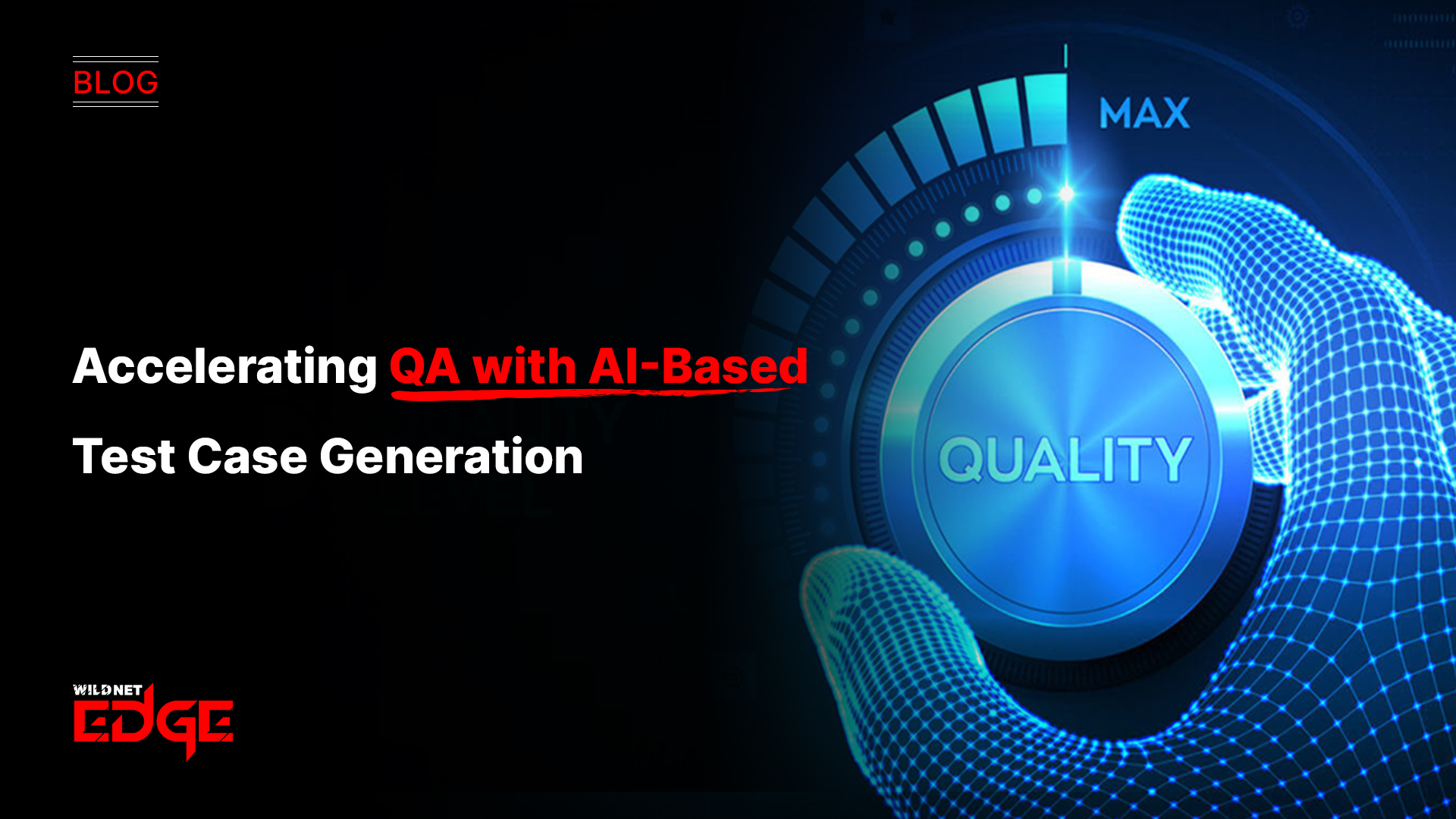Are you tired of slow, error-prone quality assurance processes that delay product launches? What if AI for QA could speed things up, reduce mistakes, and predict the most crucial test cases to run? In this post, we’ll dive into how AI-driven test case prediction and intelligent test suites transform QA into a faster, smarter game—helping you deliver high-quality software on time, every time.
Understanding Test Case Prediction in AI for QA
Test case prediction lies at the heart of transformative AI for QA strategies. At its core, test case prediction uses machine learning algorithms to analyze historical testing data and identify which test cases are most effective at detecting defects. This approach significantly reduces redundant testing while maintaining comprehensive coverage, creating a massive efficiency boost for QA teams.
Definition and Importance of Test Case Prediction
Test case prediction refers to the AI-powered forecasting of which specific test cases should run to maximize defect detection. Traditional testing frameworks often execute all test cases or rely on manual prioritization — both time-consuming and prone to gaps or duplication. In contrast, AI for QA models intelligently prioritize test cases based on past defect patterns, code changes, and test execution outcomes. This means your team focuses only on the tests that matter most, cutting down test cycles dramatically and accelerating software delivery.
How AI Algorithms Analyze Past Test Results
Modern AI algorithms leverage large datasets from previous test executions, including pass/fail rates, defect severity, code coverage, and environmental context. These algorithms use supervised learning to determine the correlation between test cases and defect detection outcomes, learning which tests historically catch critical bugs. Additionally, natural language processing (NLP) can analyze test case descriptions and bug reports to understand semantic relations. This continuous learning enables AI to adapt as software evolves, improving test recommendations over time.
Impact on Testing Efficiency and Accuracy
The impact of integrating AI for QA into test case prediction is profound:
- Reduced Testing Time: By focusing on high-value cases, test suites become leaner without losing effectiveness.
- Higher Defect Detection: Prioritized tests hone in on risky areas, increasing chances of catching critical defects before release.
- Cost Savings: Less compute and human resource spent on running and analyzing redundant tests.
- Improved Confidence: Stakeholders can trust that the most impactful tests are executed each cycle, minimizing quality risks.
By automating test case prediction, teams gain a smarter, data-backed guardrail against regressions—accelerating QA cycles and enabling faster feedback loops.
Building Intelligent Test Suites with AI
Beyond just predicting which test cases to run, AI for QA empowers teams to build fully intelligent test suites that dynamically adapt, prioritize, and optimize tests based on real-time risk assessment and historical insights.
Role of AI in Dynamic Test Suite Creation
Intelligent test suites are not static collections of test cases; they continuously evolve based on new code changes, defect trends, and test outcomes. AI models analyze the software under test (SUT) and align test suite composition with evolving risk profiles. For example, after a code commit touching the payment module, the AI might instantly prioritize test cases related to transaction security and integration points, deprioritizing unrelated tests like UI responsiveness. This dynamic approach ensures that test suites remain relevant and focused.
Benefits of Automated Prioritization and Optimization
Automating test suite prioritization via AI yields key benefits:
- Risk-Based Focus: Tests for high-impact modules or recent changes run earlier and more frequently.
- Resource Efficiency: Tests that historically yield fewer defects or overlap in coverage get deprioritized or removed.
- Faster Feedback: Early detection in CI/CD pipelines accelerates developer fixes.
- Improved Test Maintenance: AI flags obsolete or flaky tests for review, ensuring suite health.
This level of intelligent orchestration saves teams from manual test management overhead, enabling them to spend more time innovating and less on tedious maintenance.
Case Examples of Intelligent Suites
Consider a fintech company leveraging AI for QA to build intelligent test suites. Their AI platform analyzes code commits, historical defect data, and test coverage metrics every build. If AI detects increased risk in the loan approval module based on recent bug spikes, it automatically boosts the priority of relevant test cases. As a result, regression defects that previously leaked into production dropped by 30%, and test execution time was reduced by 40%, demonstrating measurable quality and speed improvements.
Similarly, a SaaS provider using intelligent test suites reduced manual triage and test duplication, optimizing their test cycles to deliver new features biweekly instead of monthly while maintaining high user satisfaction ratings.
Integrating AI for QA into Your Testing Workflow
Incorporating AI for QA, including test case prediction and intelligent test suites, is an evolutionary step that requires strategic planning but delivers sustained productivity and quality gains.
Tools and Platforms Supporting AI for QA
As of 2025, several advanced AI for QA tools streamline integration into existing workflows:
- Testim and Functionize: Deliver AI-powered test case generation and maintenance with smart failure analysis.
- Applitools AI: Enhances visual testing with AI-based anomaly detection.
- WildnetEdge AI Solutions: Specializes in intelligent test suite creation, predictive analytics, and seamless CI/CD integration.
- Open-source frameworks: Libraries like DeepTest and AutoTestML enable customizable AI test generation in Python and Java environments.
Choosing a platform depends on your tech stack, team size, and automation maturity, but modern tools prioritize plug-and-play compatibility for smoother adoption.
Integration Challenges and How to Overcome Them
Common challenges include:
- Data Quality: Incomplete or inconsistent historical test data limits AI model accuracy; address this by standardizing test reporting and capturing detailed execution logs.
- Cultural Resistance: Teams may distrust AI predictions initially; foster buy-in through pilot projects demonstrating clear ROI.
- Tool Compatibility: Legacy tooling might not support AI integration seamlessly; leverage APIs and middleware or gradually shift to AI-ready testing frameworks.
- Continuous Monitoring: AI models require ongoing training with fresh data to remain effective, necessitating investment in monitoring processes.
Overcoming these involves company-wide alignment, cross-functional collaboration among DevOps, QA, and data science teams, and incremental rollouts with measurable KPIs to track progress.
Best Practices for Continuous Learning and Improvement
To capitalize on AI for QA fully, embed continuous learning into your workflow:
- Feedback Loops: Capture test outcomes and production defect data to retrain AI models regularly.
- Human-in-the-Loop: Incorporate tester feedback to refine prioritization and alert false positives.
- Automated Model Updates: Use MLOps pipelines to schedule retraining without manual intervention.
- Dashboard Analytics: Visualize AI performance metrics (e.g., defect prediction accuracy, test coverage trends) to guide decision-making.
By creating a culture of data-driven quality, your QA processes not only accelerate but also become resilient and adaptive.
Future Trends and Advanced Uses of AI in QA
Looking ahead, AI for QA is poised to introduce groundbreaking innovations that push testing beyond traditional boundaries.
Self-Healing Test Cases and Maintenance Automation
One emerging trend is AI-powered self-healing tests. These tests automatically detect minor UI changes, element relocations, or API updates and adjust without human intervention, drastically reducing test maintenance overhead. For example, if a button’s identifier changes following a frontend redesign, self-healing scripts update selectors proactively to avoid false failures.
Maintenance automation extends to flagging flaky tests, suggesting test case retirements, and generating new tests to cover emerging gaps — all orchestrated by AI for truly autonomous QA systems.
Real-Time Analysis and Feedback Loops
AI increasingly enables real-time defect prediction and adaptive testing in CI/CD pipelines. As code merges, AI analyzes risk in seconds, recommending immediate test paths or surface regressions needing urgent attention. Integrated dashboards provide live health checks of release candidates, allowing teams to make informed deploy/no-deploy decisions rapidly.
This hyper-responsive QA accelerates feedback, reduces downtime, and aligns perfectly with DevOps agility goals of continuous delivery.
Growing Importance of AI Explainability and Transparency
As AI recommendations directly affect product quality and release decisions, transparency becomes critical. Emerging tools now provide explainability features—detailing why particular test cases were prioritized or defects predicted. This builds stakeholder trust and enables QA managers to audit AI decisions, ensuring compliance with industry standards and internal policies.
Explainable AI is especially vital in regulated sectors like healthcare and finance, where accountability for testing outcomes is non-negotiable.
Conclusion
AI for QA is revolutionizing how quality assurance teams approach testing by enabling smarter test case prediction and creating intelligent test suites that save time and resources. With WildnetEdge’s expertise and AI-driven solutions, organizations can confidently accelerate their QA workflows and deliver superior software faster. Ready to transform your QA process? Partner with WildnetEdge today and harness the full power of AI for QA.
FAQs
Q1: How does AI for QA improve test case prediction?
AI for QA uses historical testing data and machine learning algorithms to predict which test cases are most likely to uncover defects, enhancing test coverage while reducing redundancy.
Q2: What makes intelligent test suites different from traditional test suites?
Intelligent test suites dynamically prioritize and adapt test cases based on risk and past outcomes using AI, unlike static traditional suites, leading to improved efficiency and accuracy.
Q3: Can AI for QA be integrated into existing software testing workflows?
Yes, many AI for QA tools are designed to integrate smoothly with existing testing frameworks and CI/CD pipelines, providing incremental improvements without disrupting workflows.
Q4: What future trends in AI for QA should teams watch for?
Key trends include AI-driven self-healing tests, automated test maintenance, real-time defect prediction, and greater focus on AI explainability in testing.
Q5: Why choose WildnetEdge for adopting AI in QA?
WildnetEdge offers proven AI-powered testing solutions and expert guidance that help organizations accelerate QA processes efficiently and reliably.

Nitin Agarwal is a veteran in custom software development. He is fascinated by how software can turn ideas into real-world solutions. With extensive experience designing scalable and efficient systems, he focuses on creating software that delivers tangible results. Nitin enjoys exploring emerging technologies, taking on challenging projects, and mentoring teams to bring ideas to life. He believes that good software is not just about code; it’s about understanding problems and creating value for users. For him, great software combines thoughtful design, clever engineering, and a clear understanding of the problems it’s meant to solve.
 sales@wildnetedge.com
sales@wildnetedge.com +1 (212) 901 8616
+1 (212) 901 8616 +1 (437) 225-7733
+1 (437) 225-7733































